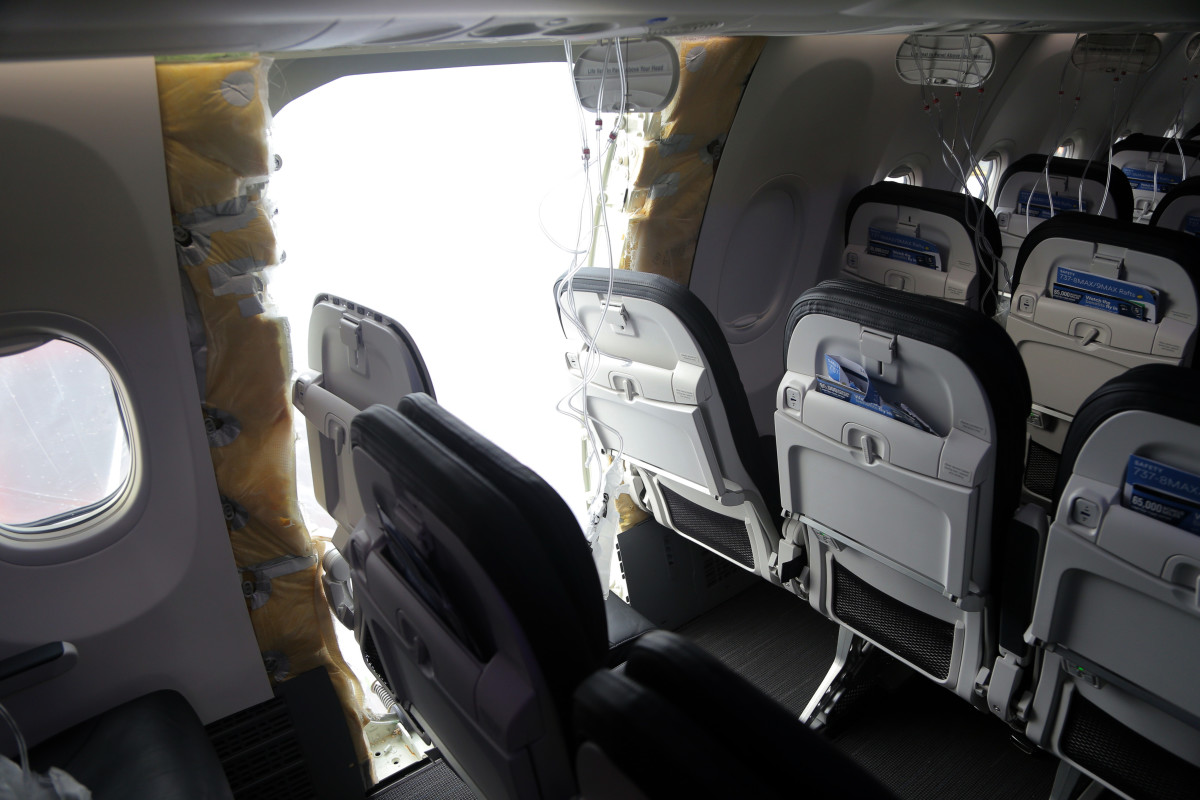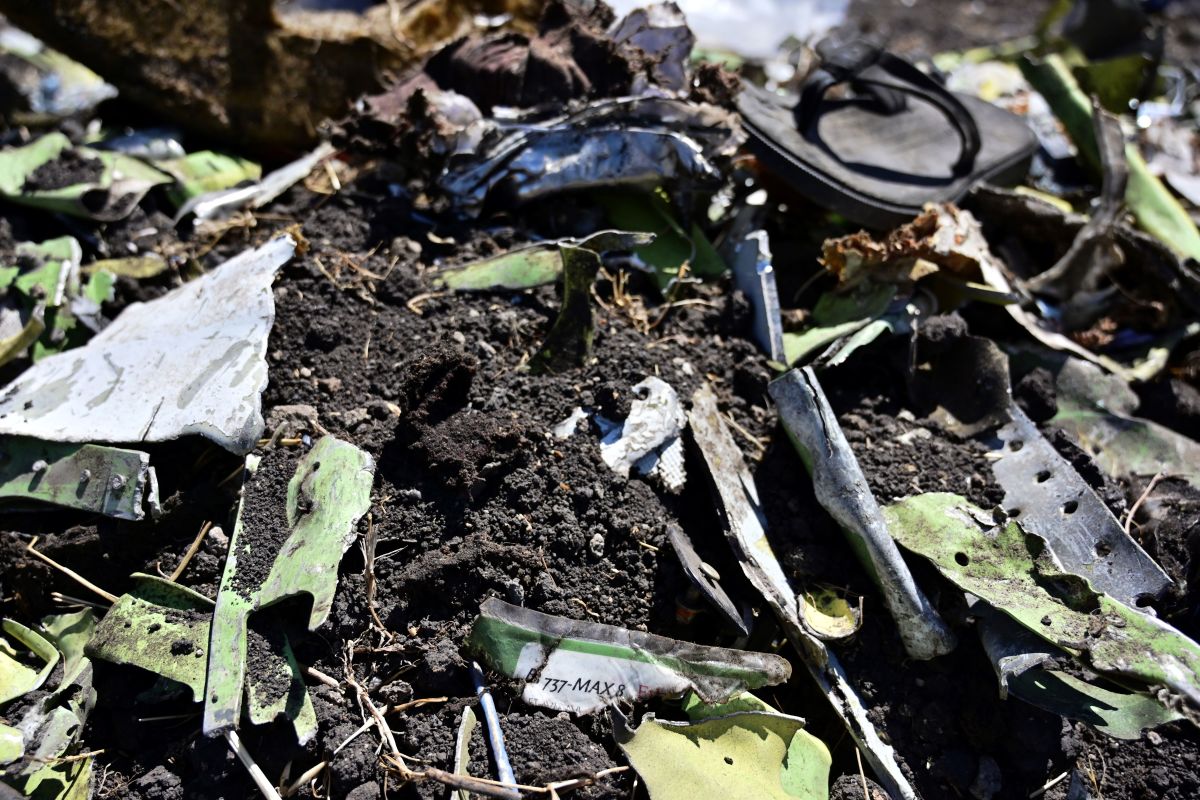
A near-fatal catastrophe at 16,000 feet. Revelations of widespread safety concerns and more in-flight mishaps. A shakeup of the executive ranks. A company insider set to testify — only to wind up dead.
It sounds like a Hollywood thriller, but it’s real life at The Boeing Company (BA) .
Once known as the builder of the safest airplanes in the sky, Boeing’s commercial jets changed the way the world traveled when they were introduced in the 1950s. Bigger, faster, and more powerful than piston-engine aircraft, Boeing’s “jumbo jets” made flying nonstop a reality, enabling millions of people to see the world and catapulting the company ahead.
But since the beginning of 2024, after a Boeing-built piece of fuselage on Alaska Airlines Flight 1282 blew out, terrifying passengers and sucking clothing and cell phones out of the aircraft, Boeing has faced intense scrutiny over the safety of its products. The Federal Aviation Administration ordered 171 Boeing 737 MAX 9 planes grounded after the incident, only to discover more loose parts.
Related: Bitcoin's history: A timeline of the top crypto's ups and downs since its '09 inception
In the weeks that followed, more in-flight problems were revealed aboard other Boeing-built aircraft, compelling anxious customers to search for non-Boeing airplanes when booking their flights — according to Kayak, these searches have spiked 15x higher recently — and caused shares of Boeing to plummet more than 25%.
And in March, the sudden death of a former Boeing quality manager set to testify against the company raised even more questions. Next came the announcement that Boeing’s CEO, Dave Calhoun, would be leaving the company at the end of 2024.

© Museum of Flight/CORBIS/Corbis via Getty Images
What is Boeing?
Founded on July 15, 1916, on the banks of the Duwamish River in Seattle, Wash., Boeing was originally known as the Pacific Aero Products Co. Bill Boeing, a yachtsman and industrialist, started his company with the help of Lt. George Conrad Westervelt, a Navy engineer, by building a set of seaplanes.
After the U.S. entered World War I, Boeing built two more planes and shipped them to the Navy’s Pensacola training facility. Impressed with their design, the Navy placed an order for 50 more.
During World War II, one-quarter of the U.S. military’s aircraft were manufactured by Boeing. These included famed designs like the B-17 Flying Fortress, which played a critical role in the Allied bombardment of Germany, and the B-29 Superfortress, the most sophisticated bomber of its day — the most famous, the “Enola Gay,” dropped the atomic bombs that devastated the Japanese cities of Hiroshima and Nagasaki, marking the end of the Second World War. Boeing became a symbol of American innovation.
Related: Surge pricing: Examples & how it works on Uber, Lyft, DoorDash & more
After the war, Boeing manufactured airplanes for transporting mail and, later, commercial passengers. Its 367-80 prototype, built in 1954, was a four-engine aircraft that was powered by propulsion, not pistons. It led to the development of the Boeing 707-120, the world’s first commercial jet airplane.
Now based out of Arlington, Virginia, Boeing has grown into one of the world’s leading aerospace companies, with 145,000 employees, a 2024 market cap of $117 billion, customers in 150 countries, and major U.S. manufacturing facilities in Everett, Washington, and Charleston, South Carolina.
There are more than 10,000 Boeing aircraft currently flying the skies, and with the average price tag of a Boeing 747 at a whopping $250 million, you can see just how important the company is to the U.S. economy.
Boeing is the country’s fourth-largest defense contractor and its second-biggest commercial airline producer — only the European-owned Airbus is bigger: In 2023, Boeing delivered 528 new airplanes and had orders for 1,134 more, while Airbus delivered 735 new airplanes and had 2,094 net new orders.

Aaron Schwartz/NurPhoto via Getty Images
Why is Boeing’s stock down?
As of March 29, 2024, shares of Boeing were down 28% since the beginning of the year, making it one of the worst performers in both the Dow Jones Industrial Average and the S&P 500. The company has struggled amidst groundings of its 737 MAX aircraft as well as cancellations on new orders, and fewer new orders overall. In addition, the FAA has halted production until it is satisfied that the company has fixed its quality control issues.
Coincidentally, the announcement of the departure of CEO Dave Calhoun on March 25 caused share prices to rise 1%.

NTSB via Getty Images
A timeline of Alaska Airlines Flight 1282 door plug incident & aftermath
January 5: Alaska Airlines Flight 1282 was en route from Portland International Airport (PDX) to Ontario International Airport (ONT). Shortly after takeoff at 5:07 PM, as the plane ascended to 16,000 feet at a speed of 440 miles per hour, a piece of fuselage on the Boeing 737 MAX 9 aircraft blew out in a violent explosion.
The plane began swaying side to side as the cabin quickly lost pressure. Oxygen masks were deployed, and someone yelled that there was a hole in the airplane. Airpods, cell phones, someone’s shirt, and the back of a seat were all sucked out of the refrigerator-sized hole. Miraculously, no one was seated in row 26, where the panel flew off, and the airline reported that none of the 171 passengers and six crew members were seriously injured.
The plane quickly returned to the Portland Airport, where it made an emergency landing. Passengers were promised a full refund of their airfare. The fuselage was found in the backyard of an area high school teacher.
January 6: The FAA grounded all Boeing 737-9 MAX aircraft with a plug door (the fuselage piece), stating “Safety will continue to drive our decision-making as we assist the NTSB’s investigation into Alaska Airlines Flight 1282.”
January 9: United Airlines and Alaska Airlines reported that they had found loose parts in other Boeing 737 MAX 9 aircraft.
January 11: Six Alaska Airlines passengers filed a class-action lawsuit against Boeing. They demanded compensation for their injuries, which included a concussion and a seizure, as well as those sustained by the other 165 passengers.
February 6: NTSB investigators reported that four bolts that held the fuselage in place were missing at the time of the blowout. Within their preliminary report was a photograph taken in September 2023 by Boeing employees that showed that the bolts were missing even earlier, which meant that the aircraft had flown for several months without them.
March 22: Passengers from Alaska Airlines Flight 1282 received letters from the FBI identifying them as victims of a possible crime, stating that it, too, was launching an investigation.
Here’s the car smooshed by the United wheel at SFO. You can see the rubber smudge, and the circular imprint of the tire. pic.twitter.com/rue3ttai2u
— Wilson Walker (@WilsonKPIX) March 7, 2024
Other 2024 Boeing safety incidents
It’s been a bumpy year for Boeing aircraft, to say the least:
March 7: A wheel fell off a Boeing 777-200 aircraft as United Airlines Flight 35 took off from San Francisco (SFO) bound for Osaka (ITM). The flight, which had 249 people on board, was diverted to Los (LAX), where it landed without incident.
The tire hit a car in the employee parking lot, crushing it, before bouncing and crashing through a fence. It ended up in another parking lot owned by the Hertz rental car company. No one was injured.
March 7: Passengers watched as flames shot out of the engine of a Boeing 737-900 during United Airlines Flight 1118 from Houston (IAH) to Fort Myers (RSW). The flight crew reported an engine issue and the aircraft returned to Houston with no reported injuries.
March 12: LATAM Airlines Flight LA800 experienced a “strong movement” during its 2-hour, 42-minute flight from Sydney (SYD) to Auckland, New Zealand (AKL). The pilot of the Boeing 787-9 Dreamliner said the plane suffered temporary equipment failure, causing it to drop 500 feet.
One passenger described chaos as people who weren’t wearing seat belts flew out of their seats. He looked up and said he saw another passenger on the ceiling, looking down at him. Emergency services treated 50 of the 269 people on board.
March 15: United Flight 433 from San Francisco (SFO) to Rogue Valley (MFR) in Oregon reported a missing fuselage panel on the Boeing 737-800 after landing. No injuries were reported among the 139 passengers.
March 29: United Flight 990 from Paris (CDG) to San Francisco (SFO) was diverted to Denver International Airport (DEN) after reporting an engine issue. The Boeing 777-20 carried 145 passengers and landed safely, with no emergency crews needed.

TONY KARUMBA/AFP via Getty Images
A history of deadly crashes on Boeing 737 MAX aircraft
Safety concerns with Boeing aircraft, unfortunately, aren’t new. In 2018 and 2019, crashes in Indonesia and Ethiopia killed a total of 346 people, both involving Boeing 737 MAX 8 aircraft. In 2021, the Department of Justice reached a $2.5 billion settlement with the company for deceiving the FAA about a critical system on board the aircraft, known as the Maneuvering Characteristics Augmentation System (MCAS).
Knowing that the new system would have an impact on pilot training and certification, some employees recommended removing all references to the system in their training manuals. Doing so may have cost lives.
As a result of these incidents, the “special relationship” Boeing had enjoyed with the U.S. government since its inception came under fire. As Boeing’s operations expanded exponentially, federal regulators simply couldn’t keep up, and they gave the company, along with other airplane manufacturers, the authority to conduct their own airplane inspections and even approve major repairs.
All that changed in the aftermath of the MAX crashes. In 2020, Congress passed the Aircraft Certification, Safety and Accountability Act, which mandated 100 new provisions for the FAA to implement, including expanding the use of independent safety reviews and adding more safety inspectors to airplane factories.
Would Boeing murder a whistleblower? Before this month I'd have said it depends. I didn't think Boeing would kill a middle manager who never worked on the 737 Max & left in 2017.
— moe tkacik (@moetkacik) March 28, 2024
What surprised me was how many more informed observers felt Boeing...mighthttps://t.co/eiBwfg3C8N
What happened to the "Boeing Whistleblower?"
John “Swampy” Barnett worked for three decades as a quality control manager in Boeing, first in Everett, Washington, and later in Charleston, South Carolina. Frustrated by the company’s placement of profits above safety at the Dreamliner factory in South Carolina, he filed a complaint with the U.S. Labor Department in 2017, the year he also retired.
Barnett spoke with reporters at The New York Times and BBC about what he saw, which included discovering poor-quality parts inside aircraft and issues with its oxygen masks. He said that he alerted management, but his claims were dismissed. After his retirement, he moved to his home state of Louisiana but traveled to Charleston for pre-trial interviews. On the final day of his deposition, he was found dead in his car in his hotel parking lot of an apparent gunshot wound to the head.
The Coroner’s office said his death appeared to be “a result of a self-inflicted gunshot wound,” although the Charleston Police Department has opened an investigation. In a statement, Boeing said: "We are saddened by Mr. Barnett's passing, and our thoughts are with his family and friends."
After Barnett's death, a family friend named Jennifer told ABC 4 News in Charleston that Barnett told her, "if anything happens to me, it's not suicide," prior to his deposition. Jennifer went on to tell ABC, "I know that he did not commit suicide. There's no way. He loved life too much. He loved his family too much. He loved his brothers too much to put them through what they're going through right now."
Related: A pre-IPO History of Reddit: From “front page of the internet” to billion-dollar valuation
Is flying safe?
The FAA has grounded all Boeing 737-9 MAX aircraft until further notice, but even in light of the terrifying headlines, it’s important to remember that air travel remains the safest form of transportation around. Roughly 100,000 flights take off and land every day, and so the handful of incidents described above can best be summed up as extraordinary events.
According to the U.S. Bureau of Transportation Statistics, since it began surveying in 1960, 94% of all transportation-related fatalities have occurred on highways. In 2021, only 371 people died in air-related fatalities, while 42,939 people died in car, truck, or motorcycle-related accidents. In fact, 2022 had the lowest rate of aviation accidents on record.
Even NTSB Secretary Jennifer Homendy, who is conducting the investigation into Boeing, told CNN that she "would have no problem getting on a MAX 9 tomorrow and flying."







